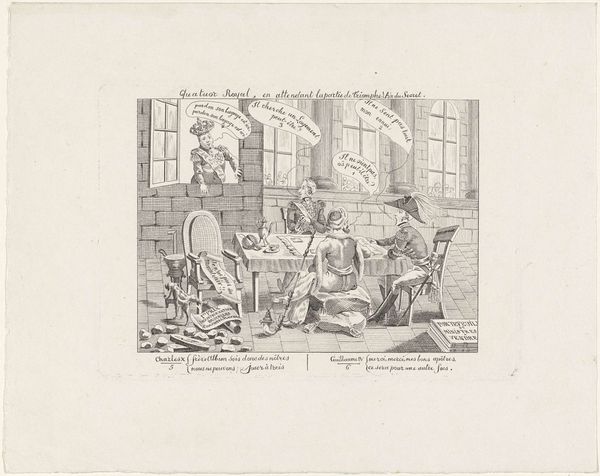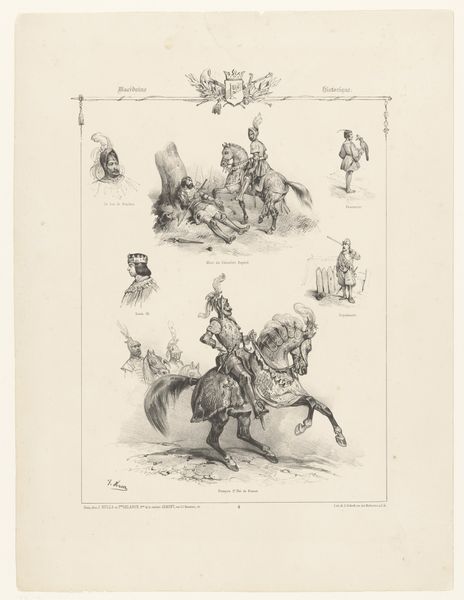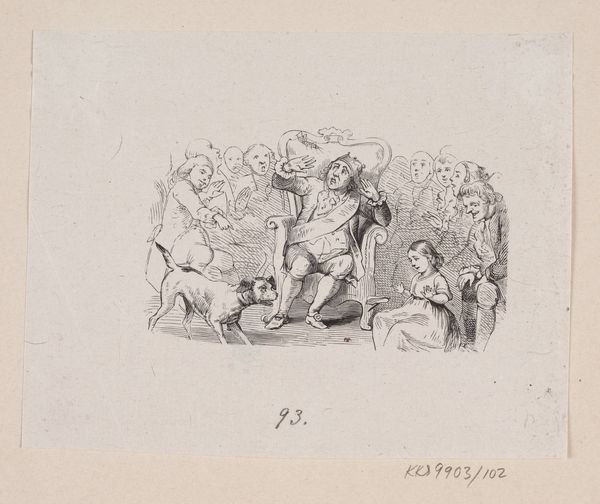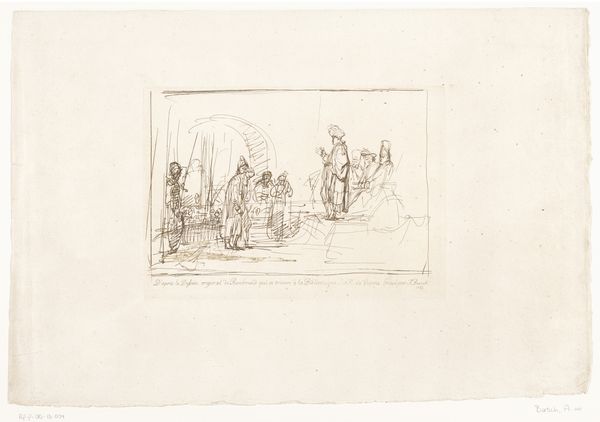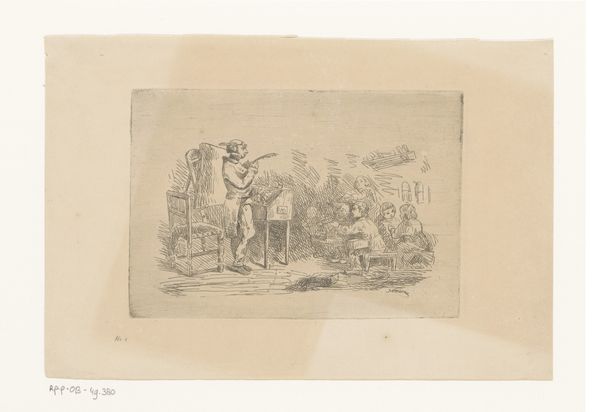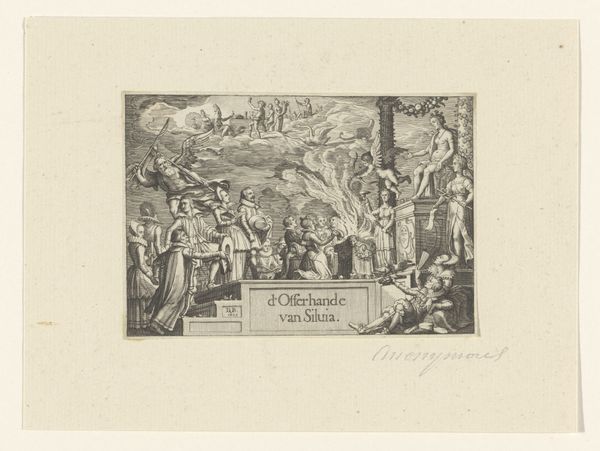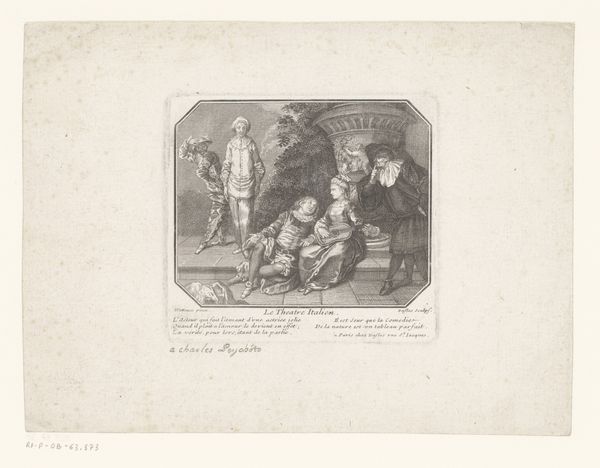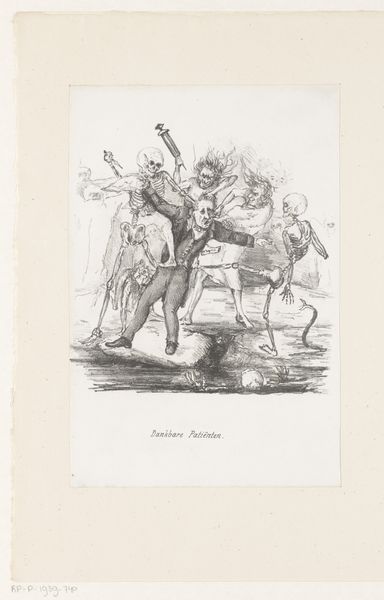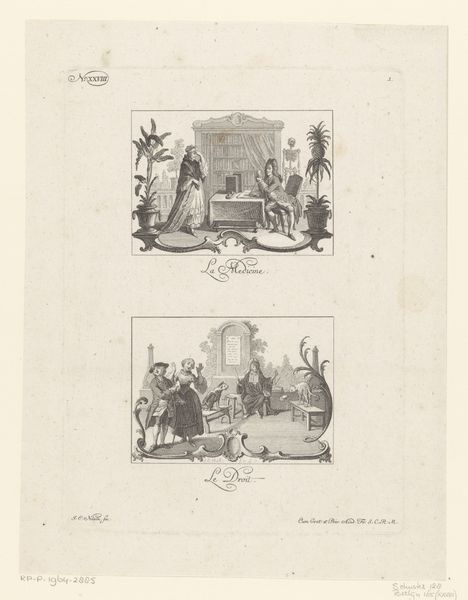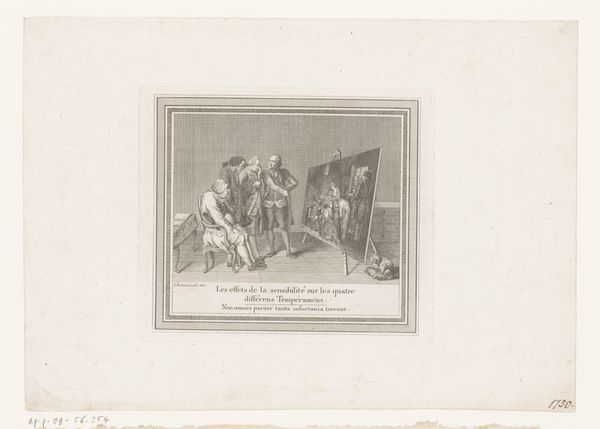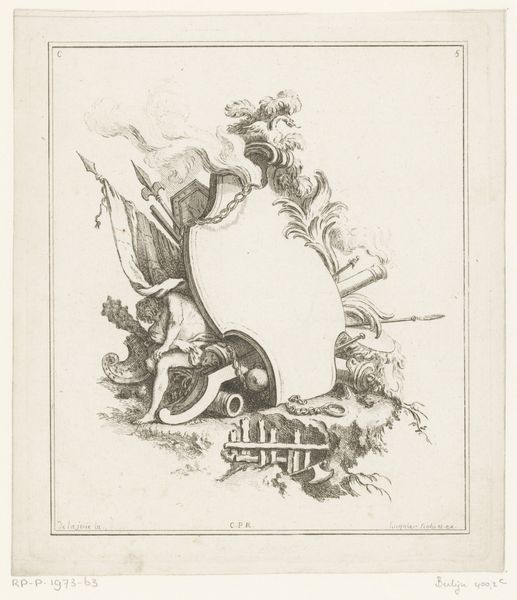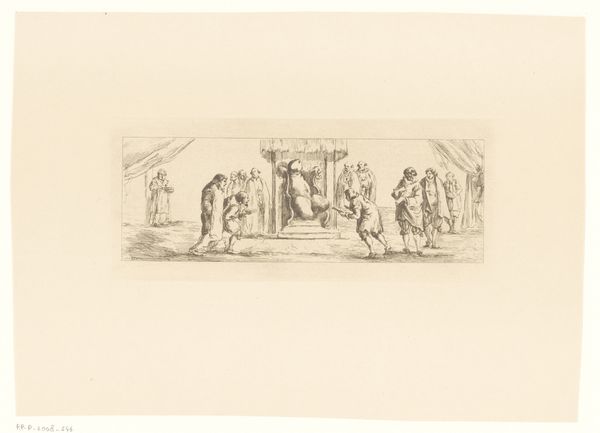
Atelier met verschillende dieren die een leeuw naschilderen 1826
0:00
0:00
drawing, print, engraving
#
drawing
#
imaginative character sketch
#
light pencil work
#
animal
#
shading to add clarity
# print
#
caricature
#
pencil sketch
#
figuration
#
personal sketchbook
#
idea generation sketch
#
romanticism
#
sketchbook drawing
#
pencil work
#
genre-painting
#
academic-art
#
engraving
#
fantasy sketch
#
initial sketch
Dimensions: height 256 mm, width 355 mm
Copyright: Rijks Museum: Open Domain
Editor: This is "Atelier met verschillende dieren die een leeuw naschilderen," or "Studio with various animals painting a lion," made in 1826 by Pierre François Ducarme. It's an engraving, and it strikes me as darkly satirical, showing all these animals trying to depict the lion. What do you see in this piece? Curator: I see a commentary on the politics of representation. Think about the era – 1826, post-Revolutionary France. Animals, often used as stand-ins for different social classes, are depicted here in the act of creating art. Who is allowed to represent whom? And how does power influence the final image? Consider the lion – traditionally a symbol of power – being passively "captured" by these diverse animals. Is this an assertion of collective power? Or a critique of the ways in which dominant narratives are constructed and reinforced? Editor: That’s a fascinating reading! So, the animals aren't just a funny scene, but represent societal power structures? Curator: Precisely. The act of painting becomes a metaphor for constructing narratives and ideologies. Who holds the brush, and whose image is being created becomes critically important. What biases are unconsciously being embedded, perhaps? Look at which animals are painters and which are being painted or sketched in the background: what does this tell us? Editor: It's interesting to think about it that way. It's more than just a funny caricature. Curator: Yes. The seemingly innocent scene actually confronts viewers with the inherent power dynamics in artistic creation. Perhaps Ducarme prompts us to be critical of the stories we tell ourselves about power, status, and control. It suggests that everyone has the ability to become an image-maker, but maybe not the power to be recognised for it. Editor: That makes me rethink what I know about Romanticism and caricature, it goes beyond the aesthetic. Thank you! Curator: And thank you! I enjoyed examining the power of animals to destabilise meaning with you.
Comments
No comments
Be the first to comment and join the conversation on the ultimate creative platform.
